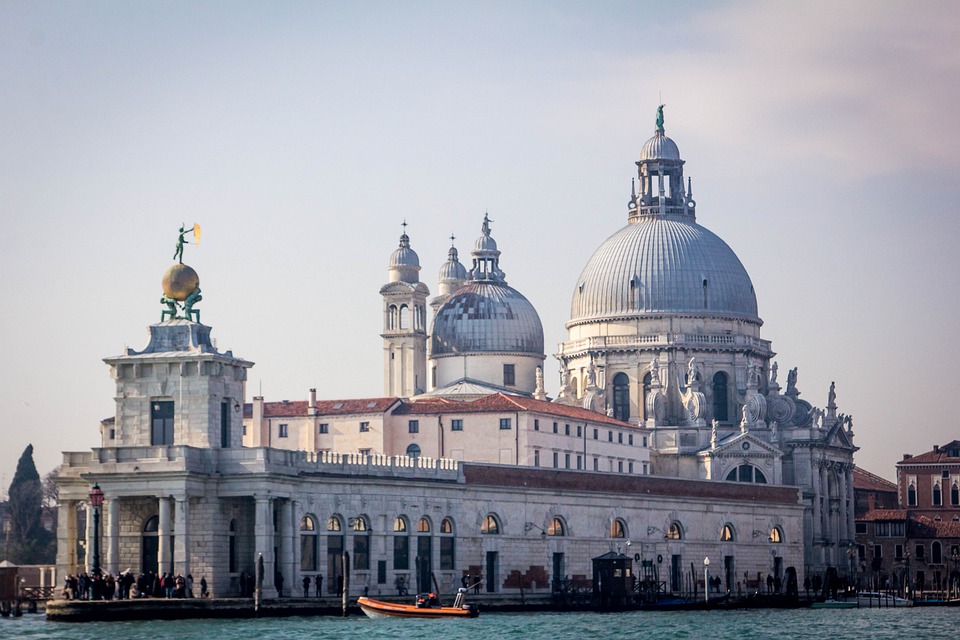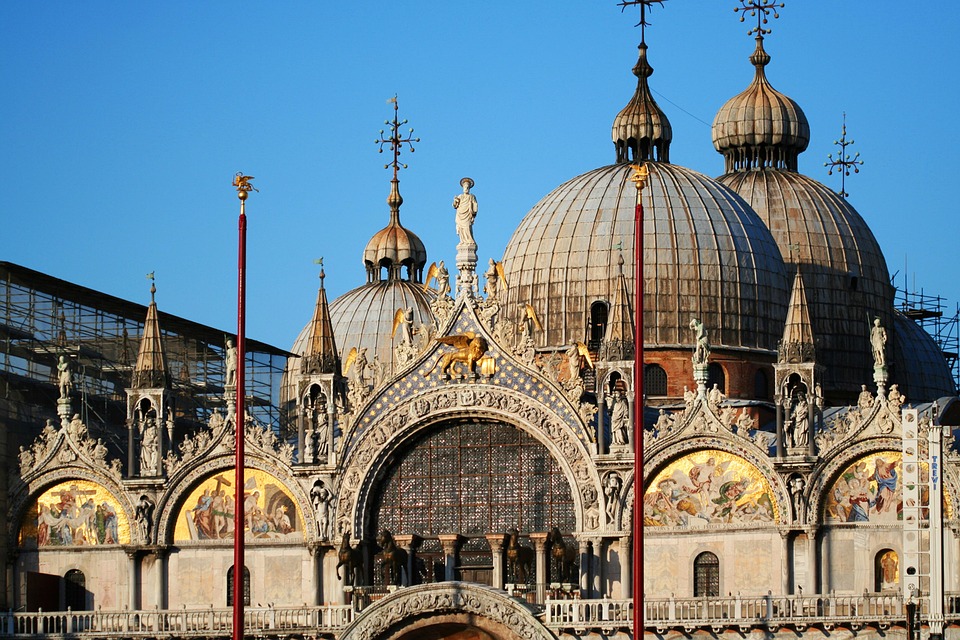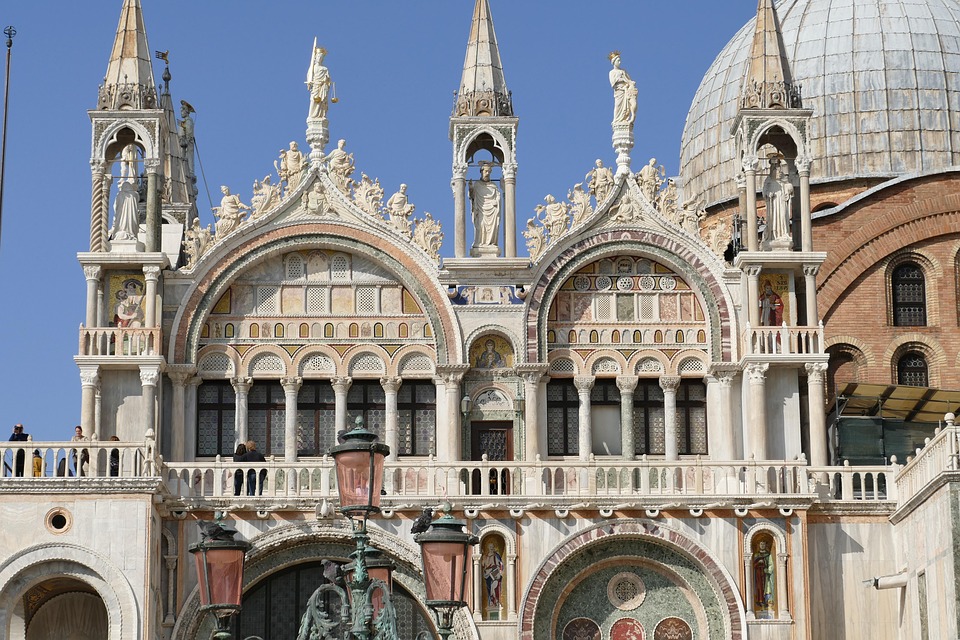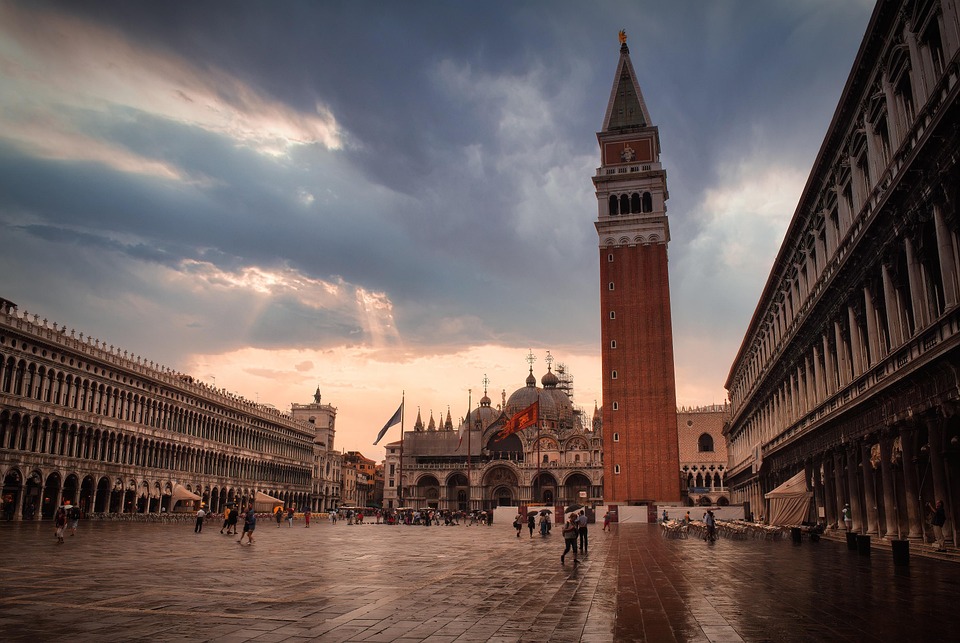



Piazza San Marco, or St. Mark’s Square, stands as the vibrant heart of Venice, Italy. This iconic square has long been a focal point for both locals and visitors, encapsulating the rich history and culture of the city. For those seeking an in-depth exploration, engaging a private tour guide in Venice can offer unparalleled insights into this magnificent landmark.
Historical Overview of Piazza San Marco
Established in the 9th century, Piazza San Marco has evolved from a modest gathering space to the grand expanse it is today. Initially, it served as a small area in front of St. Mark’s Basilica but was enlarged to its current size and shape in 1177. Over the centuries, it has witnessed numerous historical events, from political gatherings to grand celebrations, solidifying its status as the epicenter of Venetian life.
Architectural Marvels Surrounding the Square
The square is flanked by remarkable structures that showcase Venice’s architectural prowess:
St. Mark’s Basilica: Adorned with intricate mosaics and housing the relics of St. Mark, this basilica is a testament to Byzantine influence in Venetian architecture.
Doge’s Palace: Once the political hub of Venice, this Gothic masterpiece served as the residence of the Doge and the seat of government.
St. Mark’s Campanile: Standing tall at approximately 98.6 meters, this bell tower offers panoramic views of the city and the lagoon.
Procuratie Vecchie and Nuove: These historic buildings, characterized by their arched facades, once housed the offices and residences of high-ranking officials.
Cultural Significance and Events
Piazza San Marco has been dubbed “the drawing room of Europe,” a testament to its role as a gathering place for intellectuals, artists, and dignitaries. Throughout the year, the square hosts various events, including the renowned Carnival of Venice, where masked revelers celebrate in a tradition dating back centuries.
The Piazzetta and Its Landmarks
Adjacent to the main square lies the Piazzetta, an extension leading to the lagoon. Notable features include:
Libreria Sansoviniana: Designed by Jacopo Sansovino, this library is a treasure trove of ancient manuscripts and artworks.
Columns of San Marco and San Teodoro: These granite pillars, topped with statues, have historically marked the gateway to the city.
Experiencing the Square Today
Today, visitors can immerse themselves in the ambiance of the square by:
Sipping Coffee at Historic Cafés: Establishments like Caffè Florian and Caffè Quadri offer a taste of history alongside their beverages.
Listening to Live Music: Evenings often feature orchestras playing classical tunes, enhancing the square’s enchanting atmosphere.
Exploring Nearby Attractions: The square serves as a starting point for exploring Venice’s intricate network of canals, bridges, and historic sites.
Booking a Private Tour Guide in Venice
To truly appreciate the depth of history and culture that Piazza San Marco offers, consider booking a private tour guide. A knowledgeable guide can provide personalized insights, share lesser-known stories, and navigate the rich tapestry of Venice’s past and present. For those interested in a comprehensive experience, the Venice Full Day Tour: Murano & Burano offers an excellent opportunity to explore beyond the square.
Frequently Asked Questions
What is the best time to visit Piazza San Marco?
- Early mornings or late evenings are ideal to experience the square with fewer crowds and to enjoy the serene atmosphere.
Are there any entrance fees for the attractions in the square?
- While access to the square itself is free, some attractions like St. Mark’s Basilica and the Doge’s Palace may have entrance fees or require reservations.
Can I take photographs inside the Basilica?
- Photography is generally prohibited inside St. Mark’s Basilica to preserve its artworks. It’s advisable to check current guidelines before your visit.
Is the square accessible for individuals with mobility issues?
- The main areas of the square are relatively flat and accessible, but some historic buildings may have limitations. It’s recommended to consult accessibility information in advance.
What should I be aware of regarding local customs or regulations?
- Feeding pigeons in the square is prohibited, and it’s respectful to dress modestly when visiting religious sites within the area.
How can I book a private tour guide in Venice?
- You can book a private tour guide through various services, such as the Venice Full Day Tour: Murano & Burano, which offers personalized experiences tailored to your interests.
In conclusion, Piazza San Marco is not just a square but a living testament to Venice’s illustrious history and enduring charm. Whether you’re marveling at its architectural wonders, savoring a coffee at a historic café, or delving into its rich past with a private tour guide, the square offers an experience that resonates with both grandeur and intimacy.
Venice’s St. Mark’s Square – UNESCO World Heritage Site – Learn more about the historical significance of Piazza San Marco as part of Venice’s UNESCO World Heritage status.
